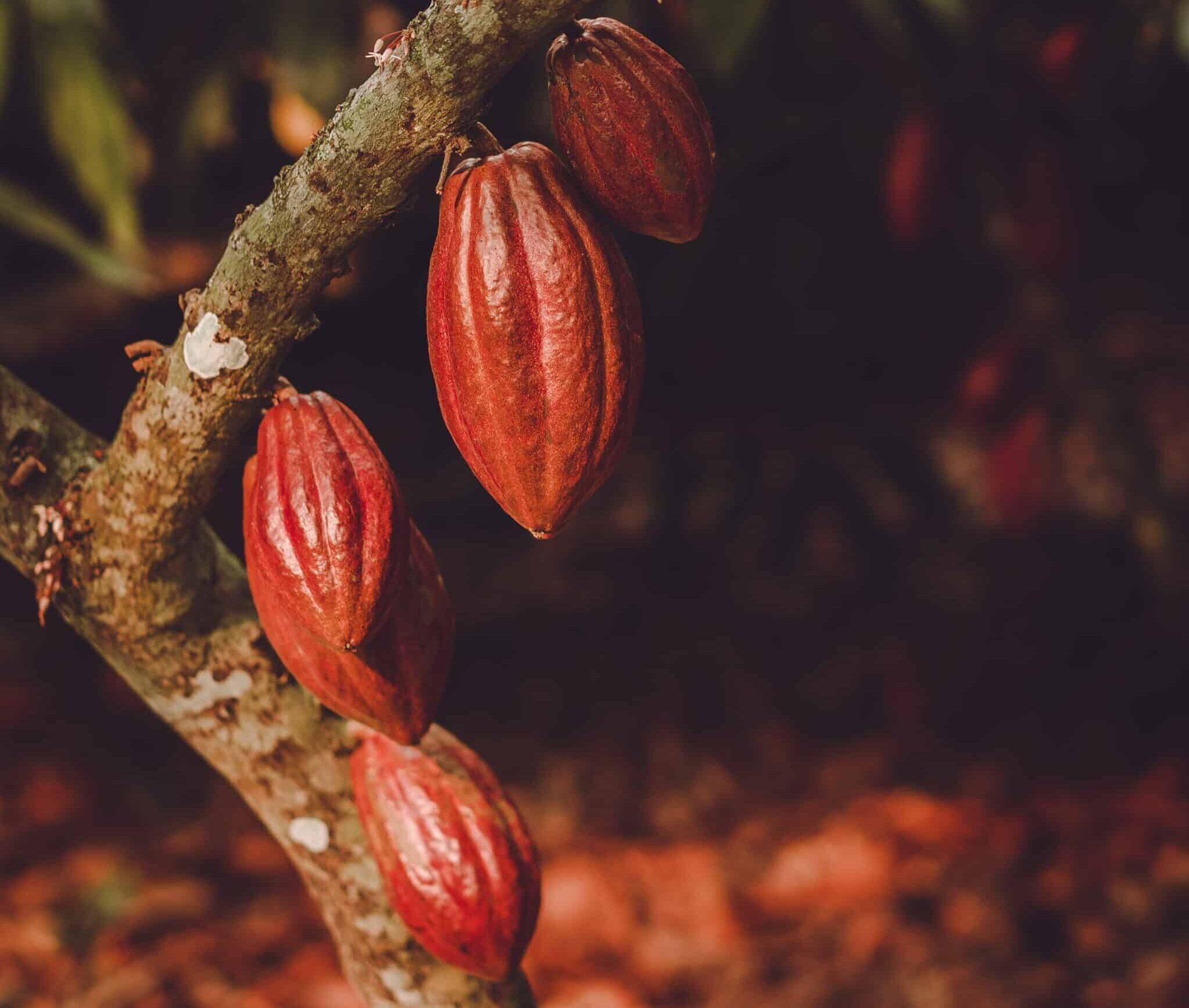
High cacao prices
May 14, 2025
/By Frank Homann, Founder and CEO of Xoco
A historic opportunity to lift farmers out of poverty and modernize the industry — except in West Africa.
Since 2024, cacao market trends show a dramatic shift: cacao prices suddenly tripled when supply went down by 10%. For decades, the prices were around $2 to $3 per kilo. As of April 2025, current cacao prices per kilo are $8.7. The price surge caused chocolate makers to increase their prices substantially.
The high prices are in fact good news for cacao farmers. With the old pricing, it was hard to make a living from cacao farming. Most small-holder farmers, who account for almost all cacao production in the world, lived in poverty.
The math is very simple
- Small holder farmers have around 2 hectares of cacao.
- They typically produce around 400 kilos of cacao a year, per hectare, so 2 x 400 kilos = 800 kilos.*
- At $3 per kilo, 800 kilos would bring in revenues of $2,400 a year. With a household of 5 people, that corresponds to $1.3 per day per household member ($2,400/5 persons/365 days).
The extreme poverty limit is $2.15 per day per household member. The moderate poverty threshold is set at $3.65 per day per household member (World Bank, 2017, PPP).
If you were a farmer considering investing in a new cacao farm, $3 per kilo would not make the business case. I did a back-of-the-envelope calculation on this some years ago, still valid today.
So, the old pricing wasn’t sustainable in any way. It entrenched poverty and didn’t incentivize cacao producers to invest in their farms. When people are poor, they are also not incentivized to protect the environment (more on that in a future article).
*Hardman & Associates, FAOSTAT, ICCO
The right price of cocoa: a lever for social transformation
Xoco has always paid partner farmers above market prices and helped with yield. The current high cacao pricing is for us a major agent of change with our direct business model, without intermediaries with farmers. At $8.7 per kilo, the daily income for a farmer household member goes up to $3.8 per day, which not only takes farmers out of extreme poverty, but out of poverty entirely – the poverty threshold being $3.65 per day.
Once this threshold is broken, history shows that good feedback loops start. Nutrition and health improve, kids go to school, and small investments are made to further improve peoples’ prospects for the future.
To illustrate the effects, I often tell the story of one of our first partner farmers in Honduras, Don Alfonso. With Xoco’s model, Don Alfonso, with two hectares of Mayan Red cacao, made good money.
With the proceeds he bought an old truck that he used to go to the pharmacy 20 kilometers from his farm, to buy medicine for his diabetes. He improved his house, so it didn’t leak in the rainy season. But best of all, he paid for his granddaughter’s studies. She is now an accountant and lives in one of the larger cities in Honduras.
Poverty curve broken and she is well into the middle class. These are real benefits that happen to farmers when the pricing is right. As chocolate makers and consumers, we should be happy about that.
Another great benefit of the higher prices is that investments are now also “in the money” for cacao entrepreneurs. Highly needed for the industry to modernize and develop. Investments seem to be happening in Latin America right now, although still with caution as prices may fall back to the old unsustainable levels again.
West Africa Is left behind by progress
However, the sad news is that the cacao price surge doesn’t benefit most cacao farmers in the world. In West Africa, where most of the world’s cacao comes from, governments control pricing. As a farmer, you can only sell to the government.
The cacao pricing policies in Ghana and Ivory Coast fix prices to farmers at around $3 per kilo. The government sells at the market price, $8.7 per kilo today, and keeps the difference. It is a 60%+ tax on the extremely poor farmers.
On top of this, in West Africa, there are capital controls, and land titles are often non-existent or unclear. Combined with rampant corruption, this hardly sets the scene for investments in the cacao sector.
My personal hope is that prices stay at their current levels. I believe that $8 to $9 a kilo could very well be the equilibrium price level that could modernise the cacao industry globally.
A page can be turned in the history of cacao.